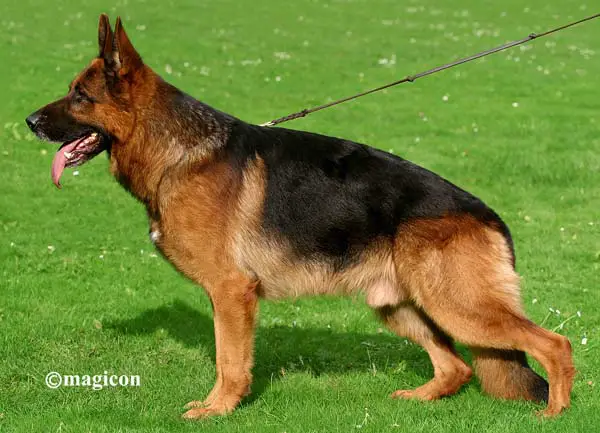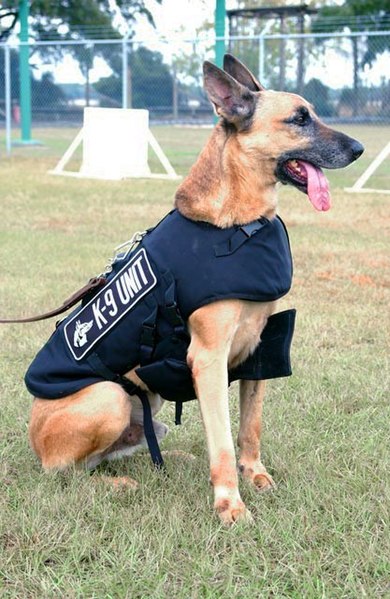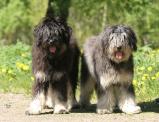
This is a placeholder text
Group text
by Silbersee on 11 March 2008 - 02:03
TIG,
I honestly do not know the dates for these changes. I can only tell you that they happened long before my time. The development of the breed registry was described in the special SV magazine issue to commemorate the 100th anniversary, if I remember that correctly. There was an interview with Herta von Stephanitz in there, the Rittmeister's daughter who is an honorary member of the SV. I really need to find my issue, probably somewhere in the attic. I also have old SV magazines in my parents' attic in Germany. My mother has threatened for years to throw them out, hopefully she has not. I have to check when I visit them in the summer. I also used to talk to old time breeders and judges about the breed's development.
I am going to start a thread on this on the German board and see what kind of data I can get from others. There is a guy named Roland who is very knowledgable in the history of our breed. He had told me once about a couple of dogs with questionable or unknown heritage. When looking at the described female clans in the Schaeferhund.info database, I noticed that some were used/added as late as the 50s. My guess is that they had to after World War II, since a lot of dogs were either dead or exported. That might be where the open registry came in, to refreshen and widen the gene pool. Some lines were extinct or lost during the post-war era. I have to find that particular thread on the German workingline board, there it was mentioned that one of the females supposedly was not even a GSD. When you look at old pedigrees, you might find dogs going to a particular female with an SVAlt No., example: www.pedigreedatabase.com/gsd/pedigree/464918.html This Greti von Memmingen is one of the foundation females used from the outside. The Memmingen kennel had some outstanding dogs in the early times, almost exactly 100 years ago. Greti's heritage is unknown. She might have been just a herding female added to the genepool. Don't bother viewing the "Change History", a couple of people were trying to add Czech dog names to her, which of course is not correct. I guess Oli corrected that. I will see if I can find out more, might be a few days though.
Chris
by TIG on 12 March 2008 - 06:03
Chris, Thanks for another good post. I learned something- never knew about the SVALT numbers - interesting.
I'm hoping your posts on the German boards garners us some more new info. Thanks again. Beth
by harddawg on 14 March 2008 - 19:03
Crossposted from workingdogforums.com
"The thing that needs to be taken into account is that for many breeds what is outlined in the breed standard and what is seen in the conformation show ring are NOT the same. The GSD is probably the worst of the working breeds as far as this goes.
The breed standard hasn't really changed since the breed's inception. The dogs certainly have. People's *interpretation* of the standard has, due mainly to personal preference. Look at the American and European show lines. Both are conformation dogs, and thus supposedly bred to most closely fit the standard, and essentially the SAME standard. Yet they look nothing like one another, and very little like the standard.
The American show breeders have taken the portion of the standard in relation to gait, and gone to the extreme breeding dogs specifically for the "flying trot" and they have gone so far in favor of trotting that the dog's overall physical ability has been compromised. Sure, their dogs can trot fluidly and effortlessly, but they can't run fast, jump well, and many of them can't even walk normally.
The German show line breeders have created banana backs. They have taken the portion of the standard that refers to a back that slopes gently, and created severe roaches that supposedly are "correct" and make for a more efficient trotting dog due to greater rear impulsion. Again, overall athletic ability has been compromised.
Structure is important to working endeavors. A dog with poor structure will not have the athleticism to perform well, and will not be structurally sound enough to hold up physically over a long working life. Therefore it must be of concern to working breeders. But it's balanced, utilitarian, working structure. NOT what is seen in the show ring. The people who wrote the standard knew what they were doing with regards to making the dog's structurally capable of working. By continuing to place priority on working ability, both in terms of temperament and in terms of physical ability, the working breeders are the ones who have maintained the breed in structure as well.
Read the standard, look at the illustrated breed standard, look at the original GSDs from decades past before conformation showing got ridiculous, and you will see that the dogs today that most closely resemble the standard and the dogs of yesteryear are the working lines, not the show lines of either type.
The people who wrote the standard knew what they were doing in terms of making sure the dogs were physically capable of doing their jobs. By placing priority on working ability, both from a temperament standpoint and from the standpoint of making sure the dogs remained physically capable, the working breeders are the ones who have maintained the best structure in the dogs from a utility standpoint."
by Speaknow on 15 March 2008 - 07:03
by harddawg on 15 March 2008 - 09:03
"What does "utilitarian working structure" consist of? It seems to be all over the place as far as I can tell! Speaking generally also and of structure alone, I personally think you'd have to give it to the show-lines."
http://www.yourdictionary.com/utilitarian
One of the defs of utilitarian; stressing usefulness over beauty or other considerations. Structure is what makes something usefull rather it be a building, bridge, animal or even a human. Let's see Brad Pitt fight Mike Tyson. That'll give you the answer of purpose designed structure. "Speaking generally also and of structure alone", You would give it to the show-lines because? You think they are pretty? They can trot? There is a lot more to a working dog than trotting.
"The working-line dogs of yesteryear were generally on a pretty even footing with the show-lines ones but this no longer seems to be the case. Really can't agree that the 'working' dog conforms closest to the Standard – despite present show dog (American or German?) 'aberrations'?"
It isn't the case because showlines are not working line dogs anymore. They are for showing only.
The standard hasn't changed that much but look at back then;

and now...

The show line dog of the future is too heavy and weak in the back. He will break down easily.
"What sort of working ability or "utility standpoint"? Trotting, protection, rescue, police work, general versatility? I simply can't see how working dogs as a class are sufficiently alike, or so superior structure-wise, as to enable such sweeping conclusions."
Honestly you would have to be a person that has worked as both handler and helper with both types to really understand the difference. This isn't something you can read about and make decisions from any written material. You have to have the actual experience.
As a general rule there is quite a difference in athleticism, drives, spirit, health and vitality that seperates the working line German Shepherd from the show line.
Show me the showline that displays amazing power, driven to work and is this beautiful in motion...

Otherwise ignore all the people complaining and continue to let the other breed continue to take the jobs...

Until people begin to favor him and begin destroying his working ability.
http://siriusdog.com/articles/article3.php?id=369
by Speaknow on 16 March 2008 - 08:03
by Blitzen on 16 March 2008 - 11:03
I don't breed or show GSD's but have a lot of experience with another large working breed. Another trend I see that I think showline breeders needs to be careful with is the "akita-type" heads so many rave over. This is not correct for any dog requiring endurance to perform it's job. I've seen this happen in my original breed and the end result will be dogs with overly long soft palates without patent airways. These dogs will huff and puff like freight trains when called upon to do any type of work that is in the bit demanding. I think that can already be heard at ringside at the SV shows. TheAKC dogs don't huff and puff that way, they do not have the heavy, overdone heads. The shorter, heavier muzzles also bring with them missing teeth beginning with the premolars, undershot bites, round eyes, and lowered ear sets.
Short legs are another issue with this breed I think. Some feel the backs are too long, I think the legs are too short, but it is possibly a combination of both.
by Speaknow on 17 March 2008 - 09:03
by harddawg on 17 March 2008 - 09:03
The point is that many working breeds have lost nearly all of their working ability due to a primary emphasis in breeding put into showing. This is what show ring breeders do -- they ruin working breeds.
"Irish Setters, once famed at finding birds, are now so brain-befogged they can no longer find the front door. Cocker Spaniels, once terrific pocket-sized birds dogs, have been reduced to poodle-coated mops incapable of working their way through a field or fence row. Fox terriers are now so large they cannot go down a fox hole. Saint Bernards, once proud pulling dogs, are now so riddled with hip dysplasia that it's hard to find one that can walk without surgery in old age. "
All you have to do is google "decline of the working breed" and you will find much more info.
Case in point is the bull terrier. Look at the link... http://www.terrierman.com/rosettestoruin.htm
Another interesting article by Fred Lanting entitled "The Gap Widens" http://siriusdog.com/articles/gap-widens.htm
And "Will the True Working Dog Disappear" http://siriusdog.com/articles/will-true-working-dogs-disappear.htm
by Speaknow on 18 March 2008 - 09:03
Contact information Disclaimer Privacy Statement Copyright Information Terms of Service Cookie policy ↑ Back to top





